Hihi,打給厚!
繼昨天認識、練習了CTE 後,還是沒用此解出情境4,也許是因為沒把CTE JOIN 到正確的query 上,囧
在想自己得乖乖正視心魔,重新認識JOIN 的概念再回頭嘗試,那讓我們開始吧!
首先,先讓我們看看PostgreSQL documentation對JOIN 的解釋:
Queries that access multiple tables (or multiple instances of the same table) at one time are called join queries. They combine rows from one table with rows from a second table, with an expression specifying which rows are to be paired.
翻譯蒟蒻:JOIN queirs意指對數個資料表query 或一次性對同個資料表的數個實體query,其是透過指定兩資料表要配對的欄位,進而將兩個資料表的列組合在一起
有點拗口,且不知道為什麼是指定row 而不是column -_-
只好先跟著PostgreSQL Tutorials: Joins 來理解:
首先先跟著建立兩個資料表:
CREATE TABLE basket_a (
id INT PRIMARY KEY,
fruit_a VARCHAR (100) NOT NULL
);
CREATE TABLE basket_b (
id INT PRIMARY KEY,
fruit_b VARCHAR (100) NOT NULL
);
INSERT INTO basket_a (id_a, fruit_a)
VALUES
(1, 'Apple'),
(2, 'Orange'),
(3, 'Banana'),
(4, 'Cucumber');
INSERT INTO basket_b (id_b, fruit_b)
VALUES
(1, 'Orange'),
(2, 'Apple'),
(3, 'Watermelon'),
(4, 'Pear');
此時會建立兩個資料表: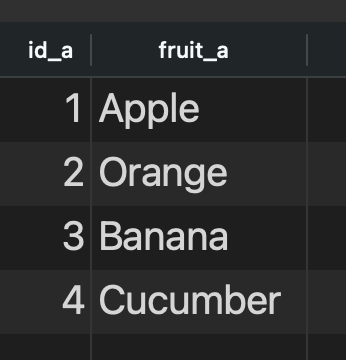
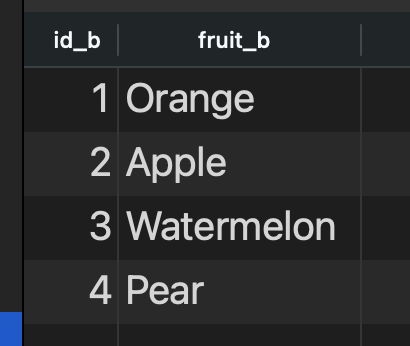
當我們將兩個資料表JOIN 起來,並指定fruit_a = fruit_b為配對欄位
SELECT
id_a,
fruit_a,
id_b,
fruit_b
FROM
basket_a
JOIN basket_b ON fruit_a = fruit_b;
會得到這結果:
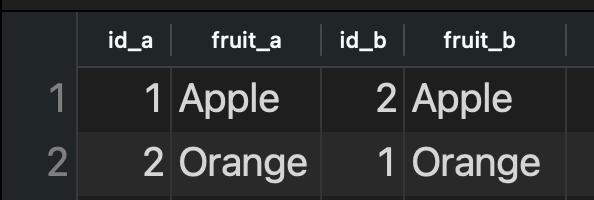
這邊的JOIN 即INNER JOIN,會用第一個資料表(basket_a)的fruit_a 欄位與第二個資料表(basket_b)的fruit_b 欄位配對,若是兩者都有的值/紀錄,則會將共有的rows 之資料INNER JOIN 起來,並回傳JOIN 後的新結果集
目前看起來都還能理解,但總共有幾種JOIN 方式呢?
PostgreSQL Tutorial提到有:inner join, left join, right join, full outer join, cross join, natural join, and a special kind of join called self-join.
但被翻爛的書頭腦快爆了,所以先來看看圖解想像吧 XD
上述的JOIN 方式以類別來分:
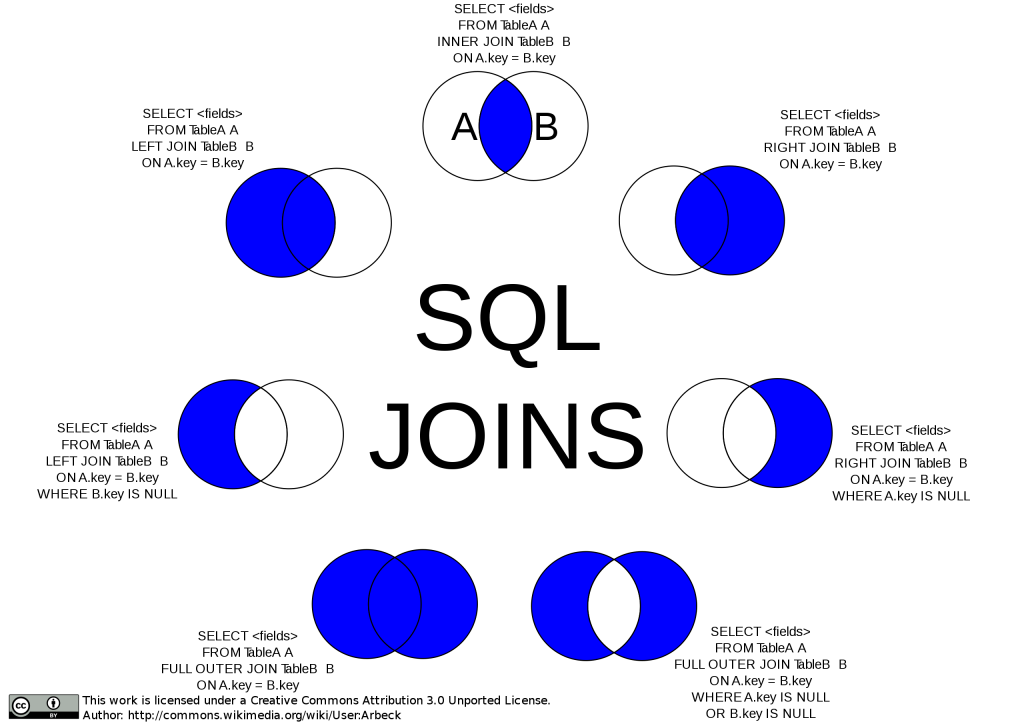
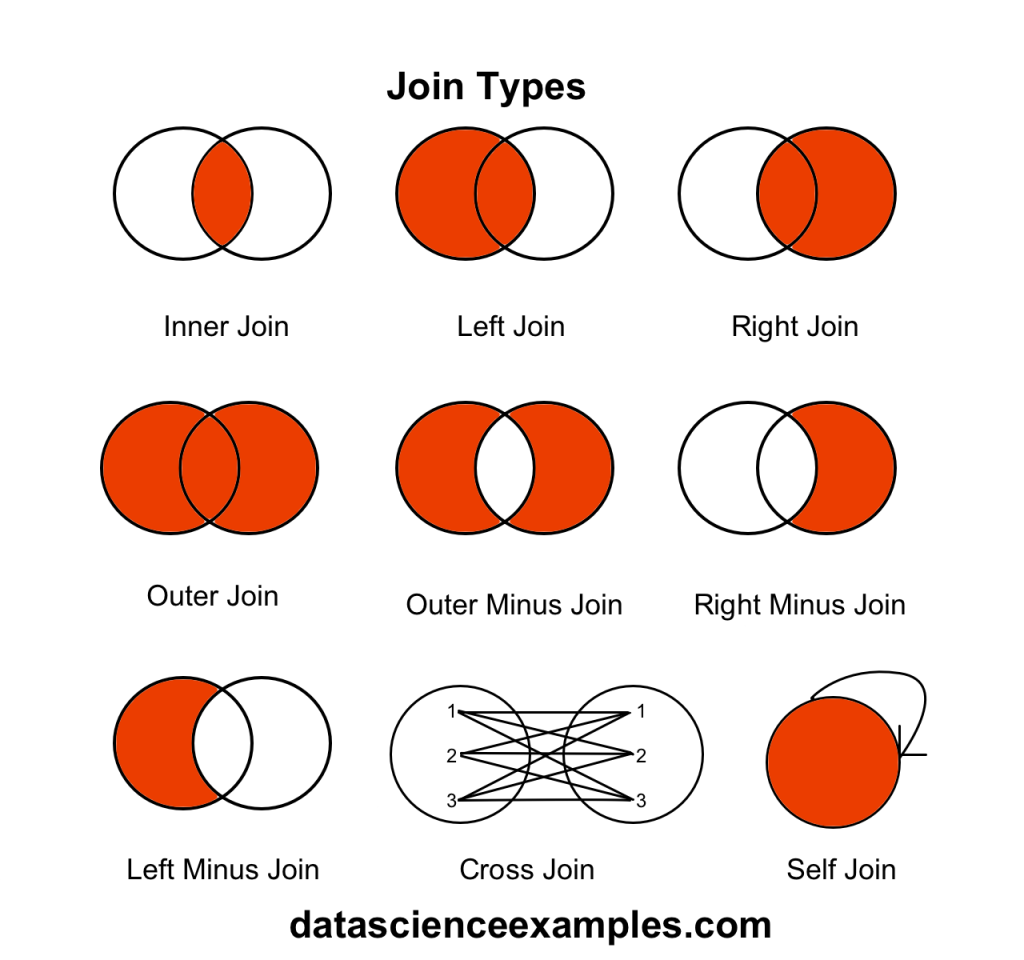
註:以上兩圖都有兩個LEFT OUTER JOIN、RIGHT OUTER JOIN,看起來沒有固定的稱呼;以LEFT OUTER JOIN 為例,圖2 是用LEFT Minus JOIN 稱呼,有些是用LEFT JOIN WITH NULL Values 來稱呼的樣子

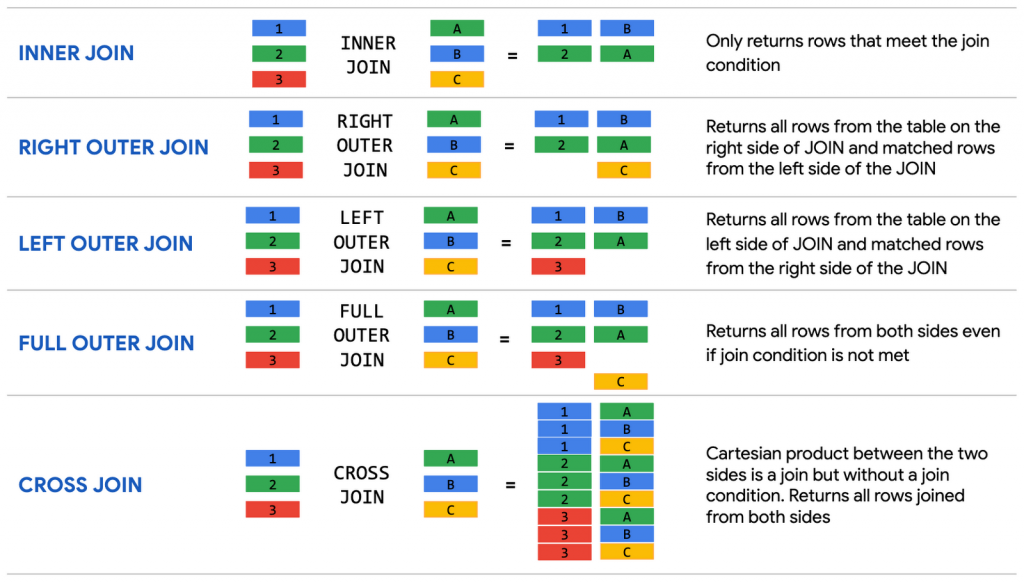
參考資料:
